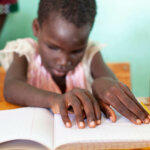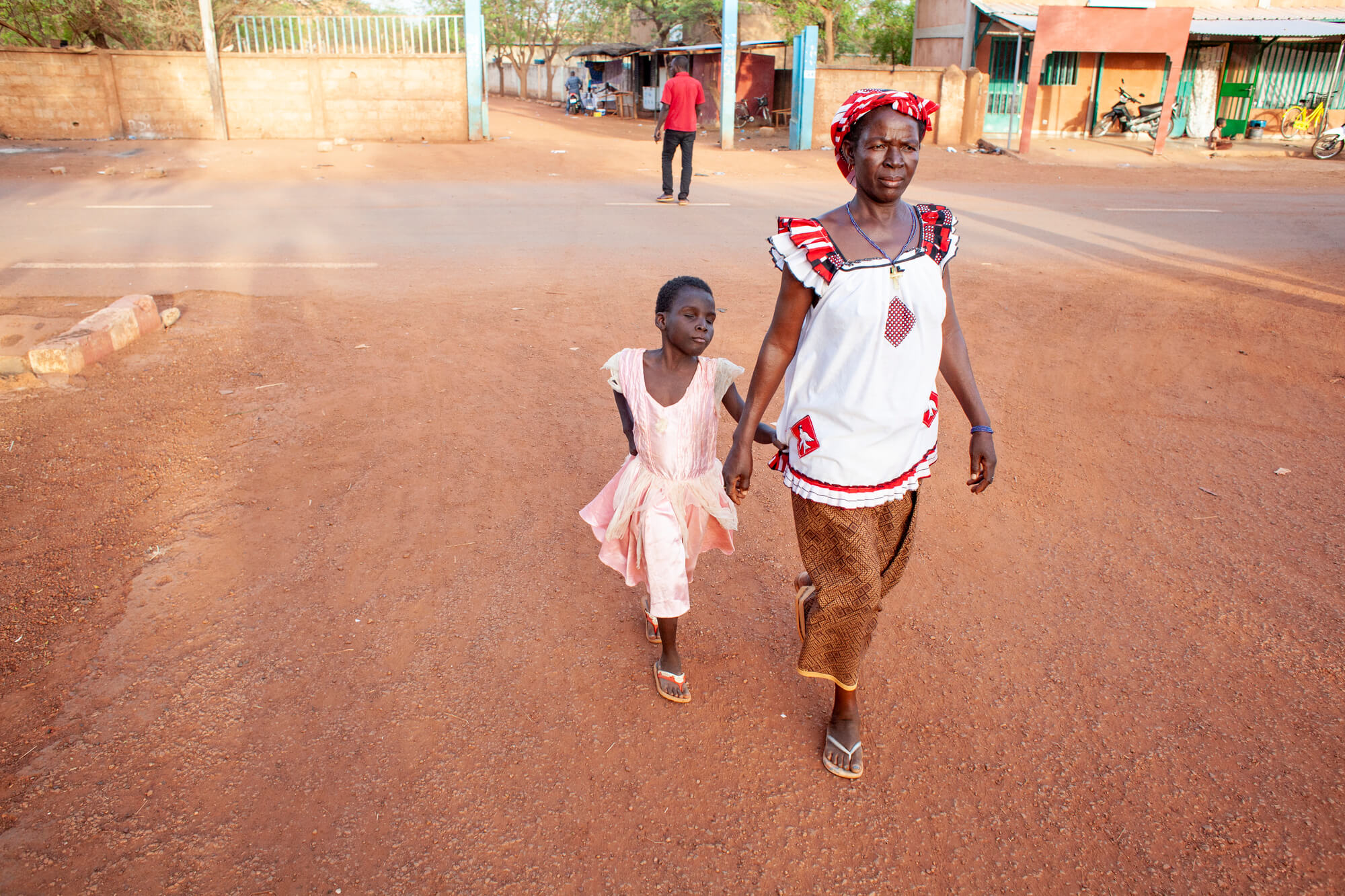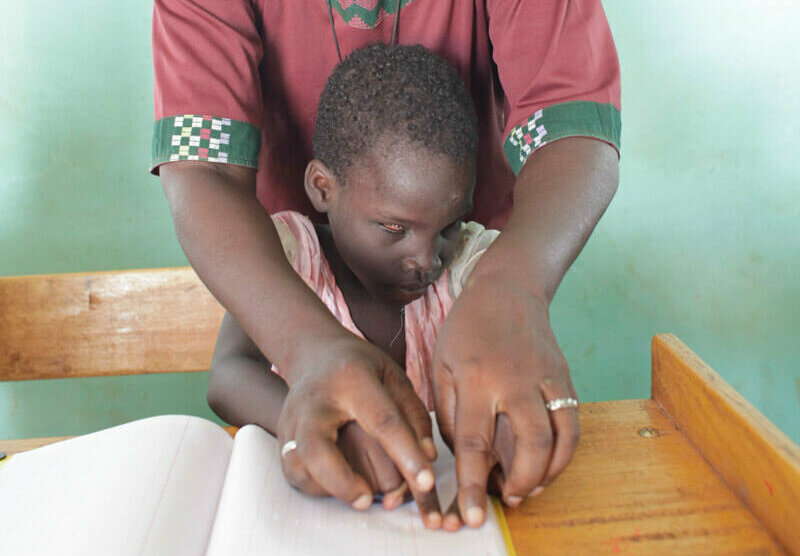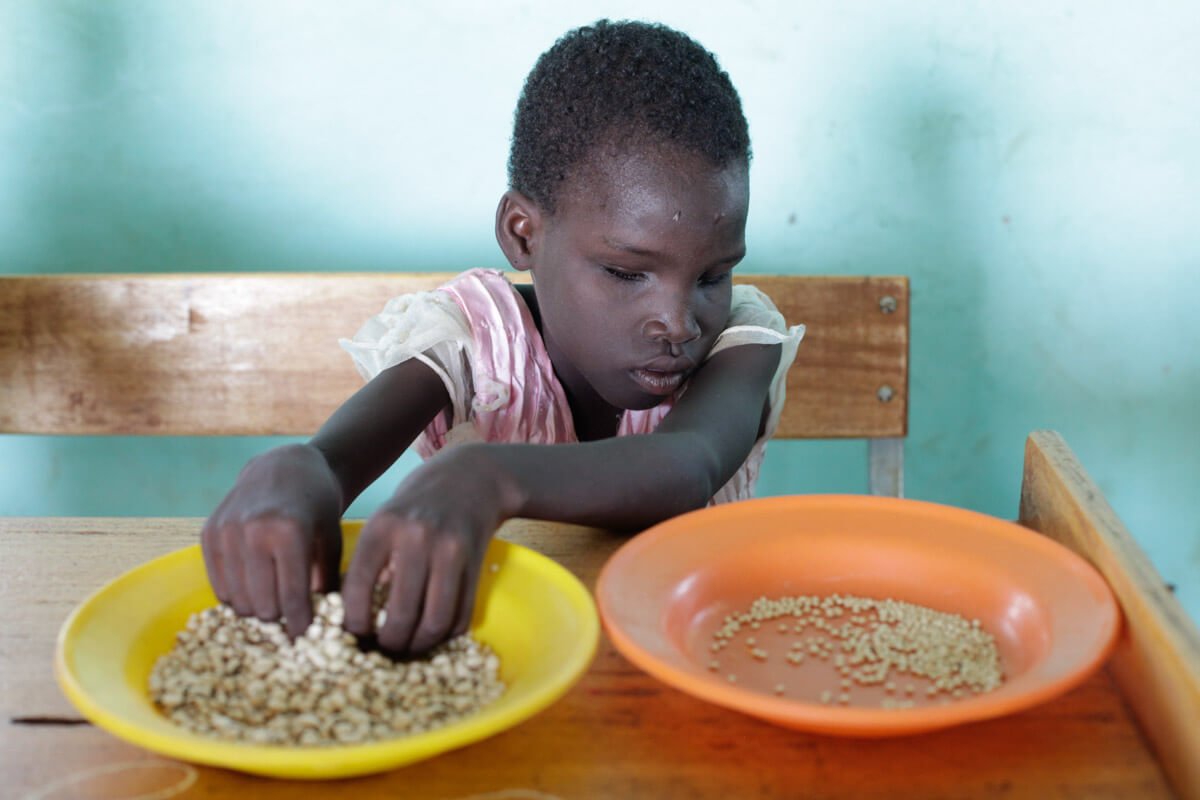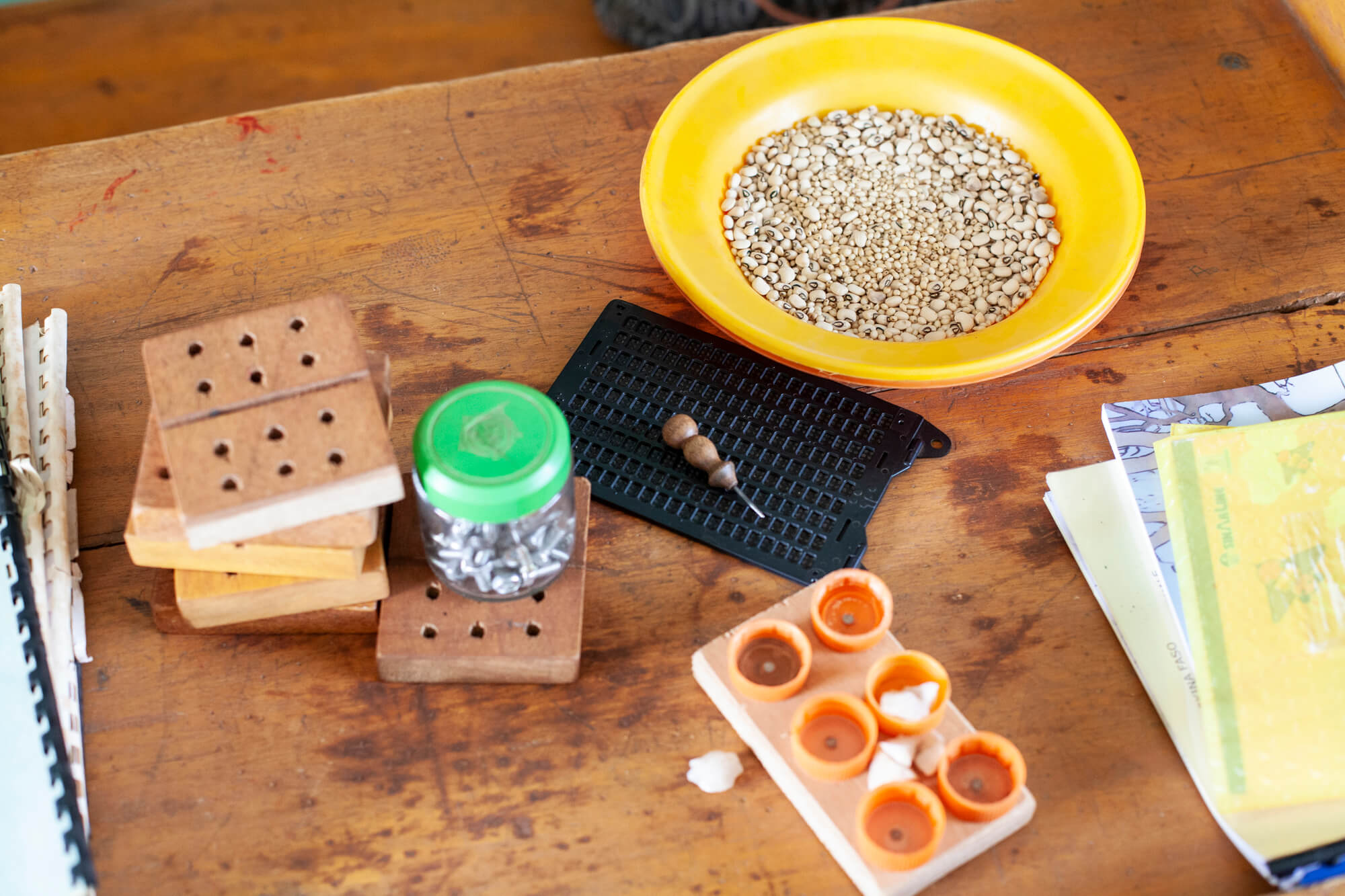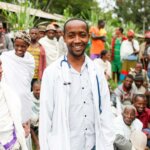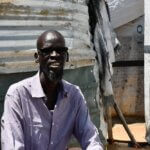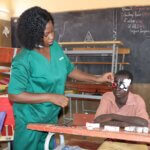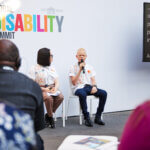- Disability Rights
- Eye Health
- Inclusive Education
- Stories
Today is World Literacy Day, an opportunity to celebrate the power of education – which opens up the world to so many – but also to highlight those who, because of various barriers, struggle to access it.
More than 2 million blind children worldwide have a significantly poorer chance of effective learning compared to children without disabilities. Light for the World supports children with visual impairments in learning to write and read through using Braille.
Concentrating, seven-year-old Amandine lets her fingers glide over the raised bumps on a wooden and metal plate placed in front of her. At the age of three, Amandine lost her eyesight to a serious illness. She can’t see what she’s holding in her hands, but she’s learning to sensitise her fingertips to Braille in her class at an inclusive school.
Amandine is one of 2 million children worldwide who live without sight. Another 90 million globally have some sort of visual impairment. Many of them will never learn to read and write, because their chances of accessing education are two to five times lower than for children without visual impairments, depending on the region. This is despite the fact that the right to education is enshrined in the UN’s Sustainable Development Goals 2030. Sadly, this disadvantage can have a significant adverse impact on their social development and self-reliance in adult life.
Why outreach is vital
Amandine, too, would probably never have learned to read and write – but, thankfully, when one of Light for the World’s partner organisations came to her rural home village to treat eye diseases in the local population, they discovered Amandine. It quickly became clear she would never be able to see again and needed some healthcare intervention.
A rehabilitation programme in the region supports blind children like Amandine. With its help, she got a place at an inclusive school in the town of Kaya in Burkina Faso, where she has begun to learn Braille. Since the school is far away from Amandine’s home, she lives with a host family during the school term. She is happy and feels comfortable with her host mother, helps out in the household and is learning to take care of herself.
Sharpening the senses with patience and practice
At her new school, Amandine has made many friends, and during breaks, she plays and mixes with other children well. The lessons are designed to be inclusive and help to raise awareness among the class that some of the children have different needs. The children without disabilities are taught some Braille alphabet too.
Dexterity exercises assist in training and sensitising the childrens’ fingers and prepare them to be able to detect fine pressure points on the paper. In the process, they distinguish between millet and beans, for example, and thus strengthen their sense of touch. With enough practice, blind people can read Braille just as quickly as sighted people can read printed letters.
Every child has a right to education
Everyone has a right to learn to communicate through speech and writing in order to maintain their own independence and human dignity. Through our outreach programmes in remote regions, we aim to target as many people as possible and place children like Amandine in inclusive schools. We work closely with our partner organisations to do this, as they know the regions best.
We are committed to ensuring that every child, with or without disabilities, is able to attend school – not only today on World Education Day, but throughout the year.
